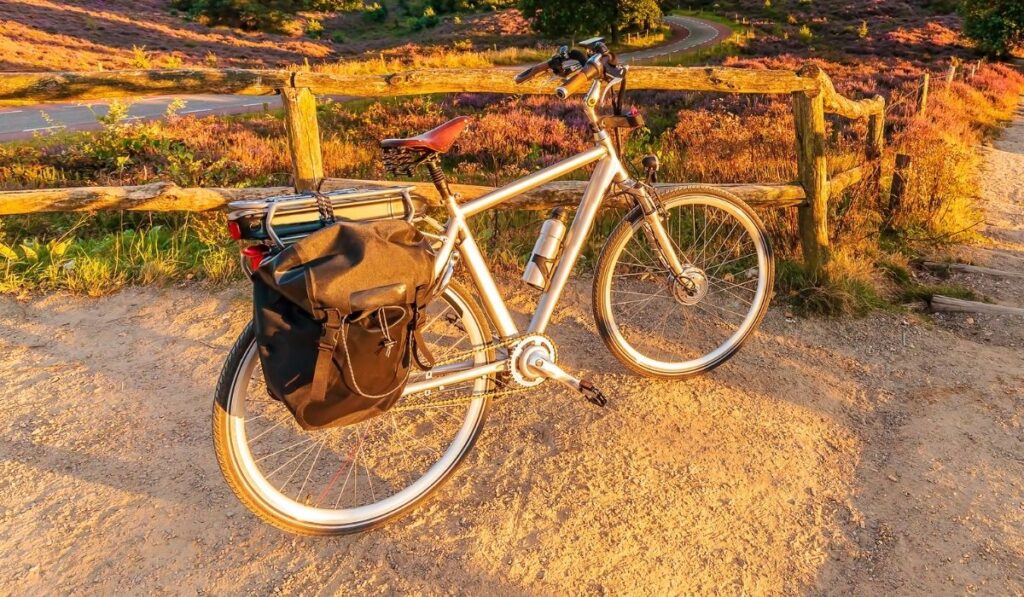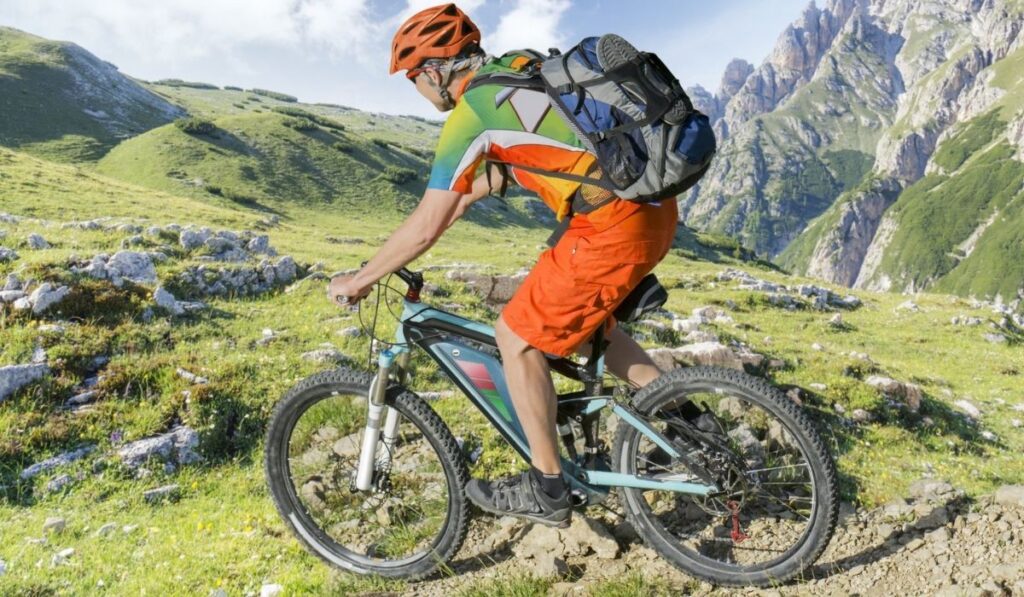If you’re reading this, then you’re probably ready to purchase your first e-bike and cruise through the city in style. I mean, you just have to charge it and hop on, right? Sadly, for each location, it may not be that straightforward. What kinds of regulations do you have to be aware of when using an e-bike?
Federally, E-Bikes are allowed in national parks but there are restrictions around bike classification and throttle use. States and cities can often have different rules around E-bikes. When in doubt, check local regulations to know for sure if you’re allowed to ride somewhere.
These laws can be really hard to wrap your head around. Not to mention, they’re also a huge pain! But they often exist for good reason. Understanding these laws could reduce any problems for you down the line and ensure you’re riding as safely as possible. Read on for everything you need to know!
Can You Ride Electric Bikes Anywhere?

The cold breeze is hitting your face, your heart is beating wildly, and you’re gripping the handlebars as if your life depends on it. Then, on your right side, you see the flicking of a police officer’s lights pulling you over. To your surprise, you were riding your electric bike illegally!
Unfortunately, you can’t just casually ride your electric bike everywhere. Different countries, states, cities, and trails have regulations and laws concerning e-bike usage. These guidelines may limit your bike usage, the speed you can travel at, the classification of bike you can use, or where you can ride it. On top of that, the federal policies for e-bikes differ from the state policies, only adding further to the confusion.
For example, Tempe, Arizona, has multi-use trails that allow e-bikes. However, you can only ride on these trails at a top speed of 20mph, must yield to pedestrians, and must be 16 or over.
Another variation is in Seattle, Washington. Seattle ran a trial period in 2019 for allowing Class 1 and 2 bikes on multipurpose trails to see how they would perform. The results are still under review, but they might limit e-bikes to a speed of 15mph.
As you can see, the rules surrounding e-bikes vary across the nation. Be sure to check your local laws and the trails guidelines before purchasing or riding. If you live in the states, you can check out this map for a head start!
Do I Need a License to Ride an Electric Bike?
Ready to hop on your ride and cruise around the city? Not so fast. You may need a license! License requirements vary by state. If you live in Alabama, Alaska, Massachusetts, Missouri, New Mexico, Wisconsin, or North Dakota, you will need a license.
E-bike license requirements are based on how the state defines e-bikes. Currently, 26 states have near-identical definitions for e-bikes and use the three-tier classification system. If you live in one of these states, you typically don’t need a license.
As always, check locally before purchasing or riding. You can ask your local bike shop or other riders to get a general idea. Alternatively, this map is a great way to start figuring out your local regulations!
Do I Need to Get My E-Bike Registered?
E-bike users in Alabama, Alaska, Hawaii, Louisiana, Massachusetts, New Mexico, North Dakota, Wisconsin, and Tennessee will all require their e-bike to be registered, under current guidelines.
These states have various forms and papers you’ll need to fill out. As always, be sure to check locally if your state requires an electric bike registration.
What About Bike Paths, Sidewalks, and Helmets?
The laws for bike paths, sidewalks, and roads are also going to vary from state to state. For example, Nebraska defines e-bikes as bicycles, so you can ride them wherever bicycles are allowed.
Some states may limit the use of Class 3 bikes on sidewalks and bike paths, as they go can faster than other classifications. States like Massachusetts and Wisconsin don’t allow e-bikes to be ridden on sidewalks or bike paths at all.
Helmet laws vary as well. Currently, 25 states have strict helmet requirements, and 25 states do not. These regulations are usually based on age. Do you see a pattern? Laws vary all across the nation, so be sure to check before you ride!
Are E-Bikes Allowed in National Parks?
Yes! As of 2019, Electric bikes are allowed to be ridden in national parks across the United States Of America. These parks include national parks run by The Bureau of Land Management (BLM), National Park Service (NPS), Fish and Wildlife Service, and Bureau of Reclamation. These parks allow access to Class 1 and Class 2 e-bikes up to 750 watts.
The parks will also have varying rules and guidelines for e-bike usage. Some will allow the use of the throttle, have e-bike specific areas, and more. Be sure to check locally or with the park before riding.
Additionally, always follow the trail guidelines and best etiquette practices when riding. We don’t want to give e-bikes a bad name!
Where are E-Mountain Bikes Allowed?
Electric mountain bikes (E-MTB) are typically allowed anywhere that standard e-bikes are allowed. If your E-MTB doesn’t fall under the typical definitions of your state, then there might be different rules for it. Your E-MTB wouldn’t fall under your state’s definitions if the motor and battery didn’t meet the guidelines, for example.
However, E-MTBs may not be allowed everywhere traditional mountain bikes go. Typically, you can ride E-MTBs on motorized single and double-track locations. But these regulations will differ from place to place. You can check out this website for a list of popular routes and locations where you can ride your E-MTB.
Additionally, most trails will be clearly marked if electric mountain bikes can be ridden there. You’ll see different road images or wording that state the regulations. When in doubt, always check locally. Ask your local bike shop or trail workers if you can use an E-MTB or e-bike on specific trails.
Can You Ride E-MTBs on Trails?

As far as considering practicality, you can definitely ride E-MTBs on trails! E-MTBs are explicitly made for outdoor use and conquering rough terrain. But, some locations and trails will vary on whether or not they restrict the use of E-MTBs.
Some locations allow you to ride E-MTBS on trails, hikes, or on other routes. As we mentioned, in 2019 electric bikes were officially authorized to be used in national parks across the US. However, there may be restrictions on throttle usage or the classification of the bikes that can be ridden.
E-bike restrictions vary by location, park, and the trail you are planning to ride on. Some trails may be limited to only Class 1 and Class 2 e-bike usage. Other trails may lack class restrictions, but fully restrict the use of the throttle. These trails should be clearly labeled and defined.
Be sure to avoid riding your E-MTB in any wilderness areas that aren’t clearly marked or defined. Additionally, you’ll want to follow the best practices and trail guidelines when riding.
Not well-versed in good trail etiquette practices? Don’t worry, we’ve got you covered. Here are some trail etiquette basics to get you started:
- Keep it local: To practice good etiquette and figure out your community guidelines, talk to your local bike shop. Your local bike shop will have the best information on where you can ride and what you should be wary of. Your local bike shop is also a great place to meet people in the e-bike circuit!
- Slow down when passing: When passing other trail users, slow down and let them know. Ring a bell or call out, “On your right!” This will ensure that they’re aware you’re passing by and prevents any accidents. This is especially crucial when riding on more narrow trails.
- Stay off trails when it’s dangerous: Heavy rainfall, flooding, and other mishaps can make trails hazardous for riders. When you’re on an e-bike, you’ll want to be especially sure to avoid these situations as much as possible- especially if water is involved. Be sure to check locally if a trail is safe to ride and in good condition.
- Monitor your speed: When riding your e-bike off-road, be sure to monitor your speed appropriately. Don’t go so fast that you may hurt yourself or others. Figure out a good speed for you, the trail, and your bike.
- Stay friendly: This may seem like a no-brainer, but it’s important to mention! Always be friendly and kind to other trail users. Say hello, have a brief conversation, and help those who need it. Doing so will ensure everyone has a fun and pleasant experience.
These are just some of the basics you should follow when riding your E-MTB on trails. Always practice good etiquette and follow the trail guidelines. Doing so gives our community a good name and keeps everyone safe.
E-MTB Trail Maintenance Tips and Tricks
Besides trail etiquette and guidelines, you also need to focus on proper E-MTB trail maintenance. Properly caring for your bikes, yourself, and the trail ensures better safety for everyone involved.
- Always be sure to do a safety check before heading out to the trail. This safety check can include checking your tires, brakes, battery, and more before riding. Doing so will ensure you aren’t riding with loose bolts, an uncharged battery, or deflated tires. All of these aspects can increase the risk of accident or injury.
- Consider how you’re treating the trail itself. Be sure to follow all trail markers and avoid going off route. Going off-route can damage the surrounding environment and poses a greater risk of injury.
- Never litter when using a trail or when outdoors. If you bring it with you, be sure to take it with you. Disposing your trash properly keeps the local environment clean and protects surrounding wildlife.
- Pack extra safety equipment in case of an emergency. Bringing extra water and food can help you and other trail goers. On top of that, first-aid kits and bicycle maintenance kits can be lifesavers in a pinch!
- Don’t ride in extreme conditions. Riding in extreme conditions is risky for newcomers and veterans alike. Give nature the respect it deserves. Don’t get cocky and ride when it’s unsafe or dangerous.
- And finally, respect your environment, your surroundings, and other trail goers when riding. Be friendly, courteous, and outgoing! Treat everything around you the way you’d like to be treated. With time, your efforts will be rewarded, and you’ll notice a positive impact within your community.
